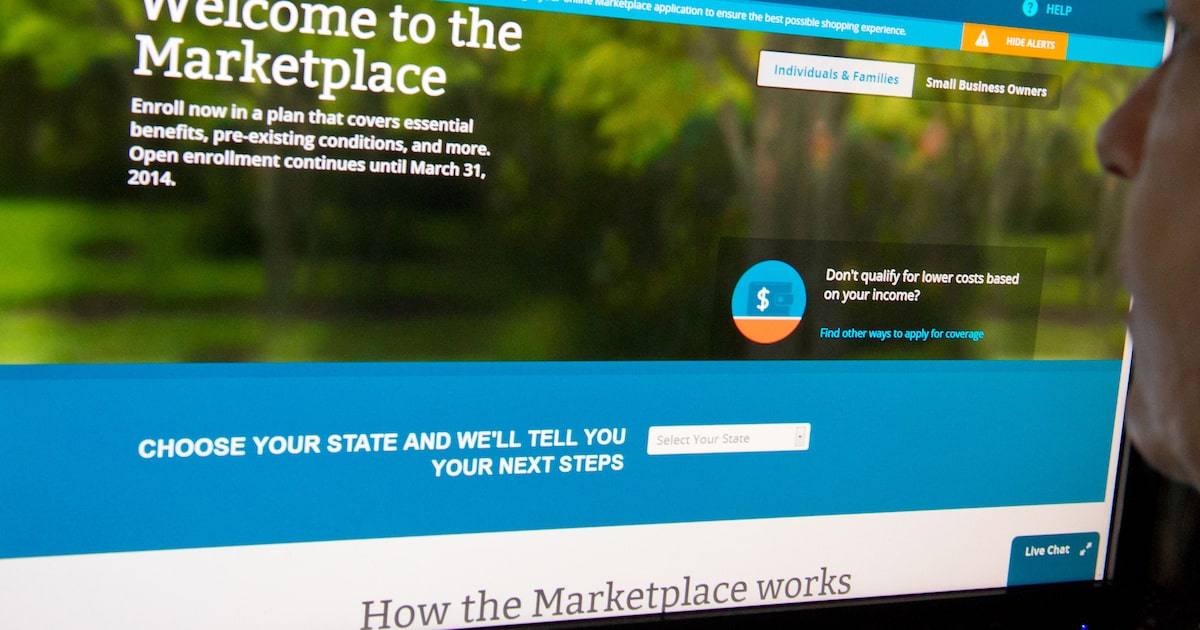For the millions of Texans who get their health insurance on the marketplace, coverage is likely to get a lot pricier next year.
In 2026, marketplace enrollees will likely face a dual hit, from the expected expiration of federal subsidies and insurers’ forecasts of higher premiums.
Texas already has the highest uninsured rate in the country, and higher marketplace costs could push more people to forego coverage.
“Most enrollees are going to be facing a double whammy of both higher insurance bills … but also the loss of the subsidies that lower much of that cost to them,” said Matt McGough, a policy analyst at KFF.
Business Briefing
Marketplace plans are the health coverage options that people can purchase for themselves and their families under the Affordable Care Act. Nearly 4 million Texans enrolled in such plans for this year.
Expiration of subsidies
The larger cost hit is likely to come from a change in federal policy.
Many marketplace enrollees are currently eligible for enhanced federal subsidies to help pay for their marketplace plans. The enhanced subsidies, which give more funding to low-income enrollees and also expand eligibility to more middle-income enrollees, were originally added in 2021.
Last year, according to data from KFF, Texans received more than $1.5 billion from those enhanced subsidies.
However, the enhanced subsidies expire at the end of the year, and U.S. lawmakers have not moved to renew them. If they expire, marketplace enrollees would have to pay their existing premiums plus any cost previously covered by the federal government.
For Texans receiving subsidies for marketplace plans, removing enhanced funding would lead to the average premium payment more than doubling.
For those Texans, according to KFF, the average annual premium in 2024 was just shy of $400. Without enhanced subsidies, the annual premium cost would be about $850.
Tom Banning, the CEO of the Texas Academy of Family Physicians, said in an email that the federal subsidies have so far protected Texans from the rising price of individual health insurance.
“But with those credits set to expire at the end of 2025,” Banning wrote, “Texans who buy their own coverage … are about to get financially crushed.”
Rising premiums
The anticipated expiration of the subsidies is also part of the calculation for marketplace insurers themselves.
Marketplace insurers are requesting the largest premium increases since 2018. That’s according to an analysis posted last week by the Peterson Center on Healthcare and KFF, which pulled data from 19 states, including Texas, plus Washington, D.C.
Across the available data, which is preliminary and subject to change, the 2026 premiums are forecast to increase by a median 15%. Blue Cross and Blue Shield of Texas proposed a rate increase of 21%, according to McGough at KFF.
The projected increases are partly an indication of insurers’ uncertainty, McGough said, as they face federal changes they’ve never dealt with before.
To explain the anticipated rate increases, individual insurers pointed to factors such as rising health care costs, including the added costs of GLP-1s, and tariffs.
But the expiration of the enhanced federal subsidies will make a significant dent, too. Insurers predict that enrollees who skew healthier may drop their plans if the subsidies expire — meaning the insurers would then raise premiums for the remaining enrollees.
Banning said in an email that enough dropouts could trigger a “death spiral” for marketplace insurance, with ever-rising prices leading to ever-increasing dropouts.
Low-income Texans would be especially hard-hit by subsidies expiring and premiums increasing. If Texans do forego marketplace coverage as a result, they may join the ranks of the uninsured, who are more likely to delay medical care and more likely to die from health issues.
